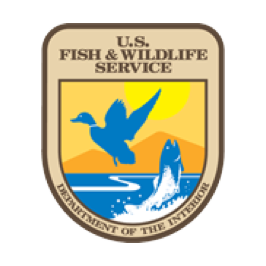The Native American Fish & Wildlife Society (NAFWS) is a national tribal organization established informally during the early 1980’s. NAFWS was incorporated in 1983 to develop a national communications network for the exchange of information and management techniques related to self-determined tribal fish and wildlife management.
Land Base
Federally-recognized Indian tribes within the lower 48 United States have jurisdiction over a reservation land base of more than 52 million acres, or 81,250 square miles. Alaskan Native lands comprise another 45 million acres. Some tribes control resources outside of reservations due to federal court decisions and voluntary cooperative agreements which allow a co-management status between tribes and states. These lands are called Ceded and Usual and Accustomed Areas and equal over 38 million acres. In these areas, tribes maintain co-management jurisdiction for fisheries and wildlife management and utilization. Thus, tribal lands coupled with the Ceded and Usual and Accustomed Areas total a natural resource base of over 140,625 square miles, containing more than 730,000 acres of lakes and impoundments, and over 10,000 miles of streams and rivers. This land combined would constitute the fifth largest state in the United States.
To Native Americans this land provides a cultural, religious, and economic subsistence base. This substantial resource base is also being utilized by both Native and Non-Native peoples for outdoor recreation purposes. These areas constitute an additional wilderness resource for the country. They contain habitat which is critical to the recovery of a number of species that are listed as threatened or endangered, from fish and birds to big game.
Asserting Their Rights
Tribes are being recognized as prominent fisheries and wildlife managers as they assert their treaty rights concerning management of their fish and wildlife resources.
Tribes may want to ensure that the environmental quality of their life and that of the fish and wildlife are not threatened. As demand for fisheries and wildlife recreational facilities grows, so does the pressure upon tribal resources. Today, Indian reservations contribute significantly toward meeting the national demand for fishing and hunting opportunities. Unfortunately, the funding options open to tribes have not kept pace with the expanding cost for management and authority of these fish and wildlife resources.
Preserving Our Precious Resources
Ensuring the vast resource base are kept in tact for future generations, the NAFWS aims to support tribal decision-makers towards astute natural resource management. Native Americans continually demonstrate environmental sensitivity towards the earth’s precious resources and are looked to by many to ‘show the way’ to replenish the earth’s resources. In today’s changing world, however, tribes are faced with a complexity of situations demanding a marriage of traditional management practices with the cutting-edge of biological management. This task places enormous strain on those in leadership and management roles. These leaders are charged not only with the maintenance of diminishing resources, but with the responsibility of shaping resource management into a flexible entity sensitive to the needs and concerns of Native Americans. To this end, NAFWS strives to provide assistance to tribes and tribal leadership, and support them in their self-determined march towards a secure natural resource future.






